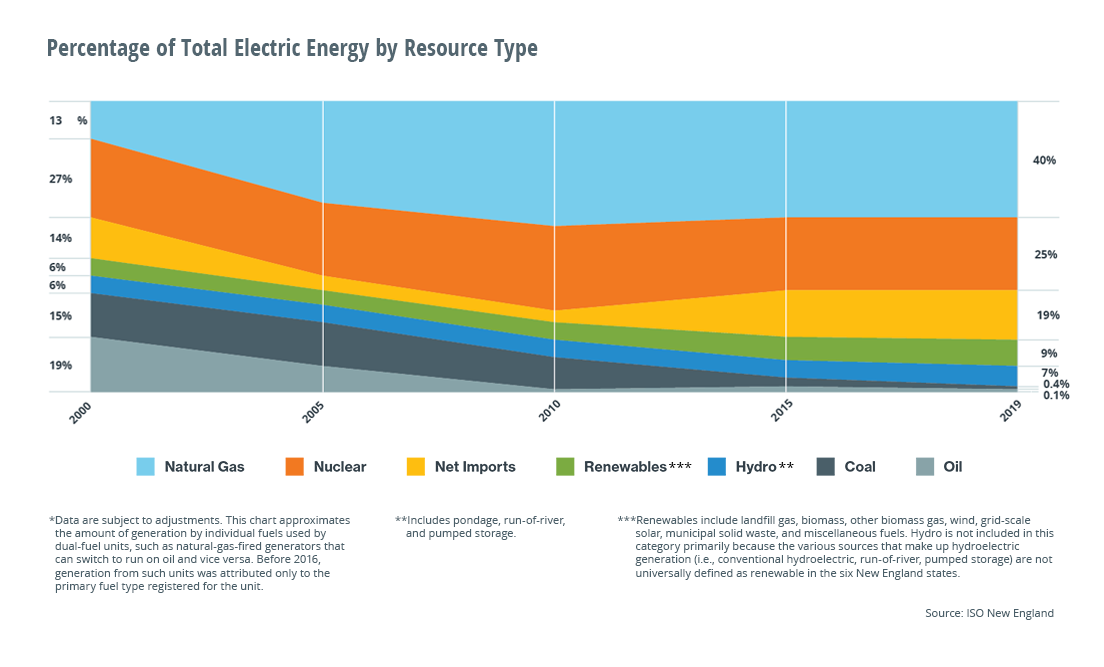Regional transmission organization ISO-NE operates New England's wholesale electricity markets and manages the region's bulk electric system. According to the grid operator, "Over the past 20 years, New England’s wholesale electricity markets have attracted billions of dollars in private investment in some of the most efficient, lowest-emitting power resources in the country—providing reliable electricity every second of every day, lowering wholesale prices, shifting costly investment risk away from consumers, and reducing carbon emissions."
For 2019, ISO-NE reports that natural-gas-fired power plants produced about 40% of the grid electricity consumed in a year (or "net energy for load"). The grid operator cites "low-cost fuel from domestic shale deposits, advances in technology, and smaller generators that are easier to site" as factors supporting the proliferation of natural gas-fueled power plants in New England over the past 20 years. Another 25% of net energy for load came from nuclear power plants in 2019, followed by renewables other than hydropower at 9.4% of net energy for load, and hydro at 7.4%.
 |
| Source: ISO-NE, Resource Mix |
Collectively, these low-carbon-emitting resources provided over 99% of the New England region's generation in 2019. An additional 19% of net energy for load was imported from Quebec, New Brunswick and New York over external transmission tie lines, mostly representing hydropower or other low-emitting energy.
Meanwhile, coal provided about 0.4% of net energy for load, and oil provided another 0.1%. As ISO-NE has noted, "Aging coal-fired, oil-fired, and nuclear power plants are closing largely because their fuel and environmental-mitigation costs make them too expensive to effectively compete against natural-gas-fired generators and growing levels of renewable-energy resources that have no fuel costs, low operational costs, and incentives designed to lower their initial capital investments." The grid operator notes that about 7,000 megawatts of generation has retired or announced plans to retire in coming years -- mostly coal, oil and nuclear power plants -- with another 5,000 megawatts of oil- and coal-fired generation at risk.


No comments:
Post a Comment